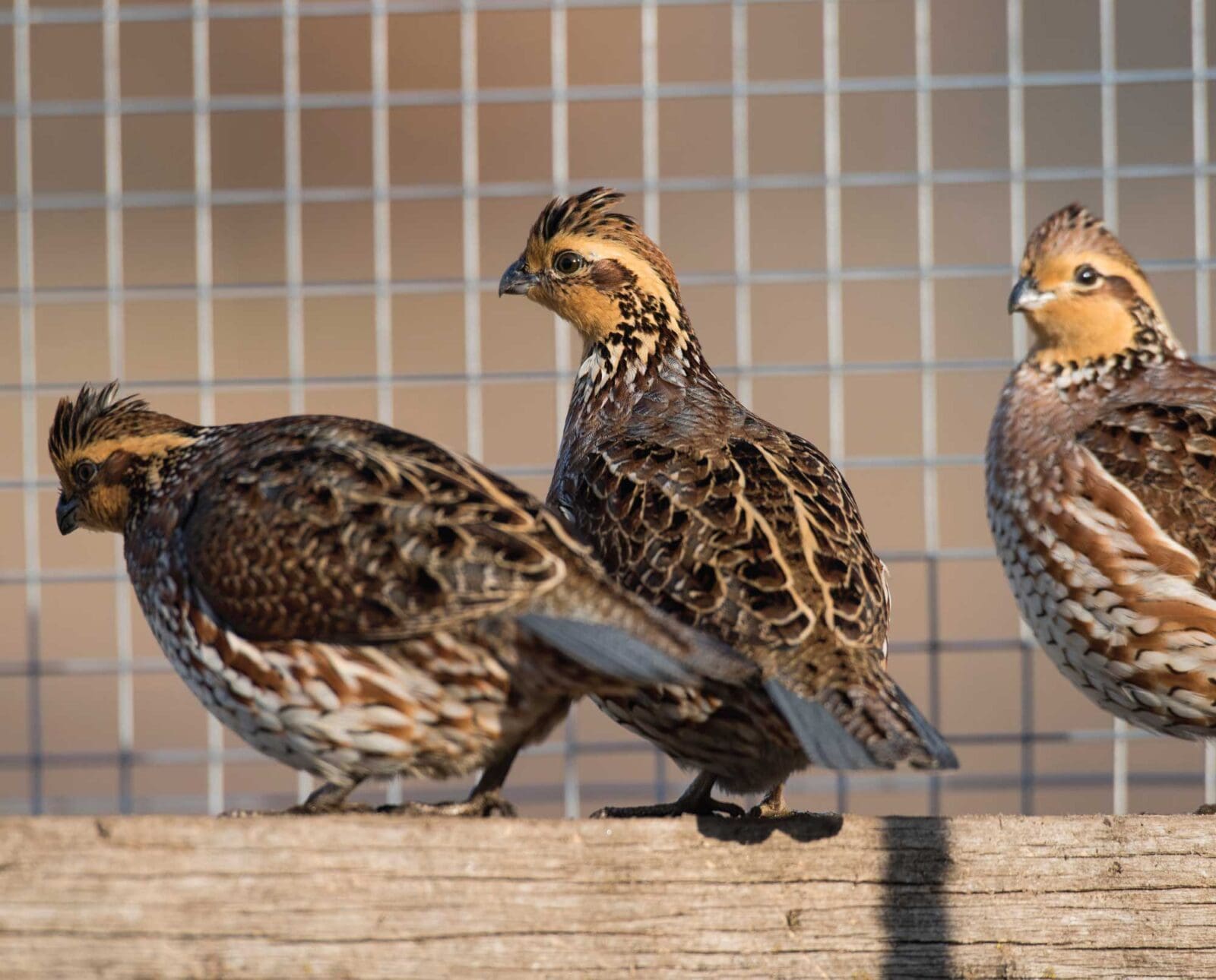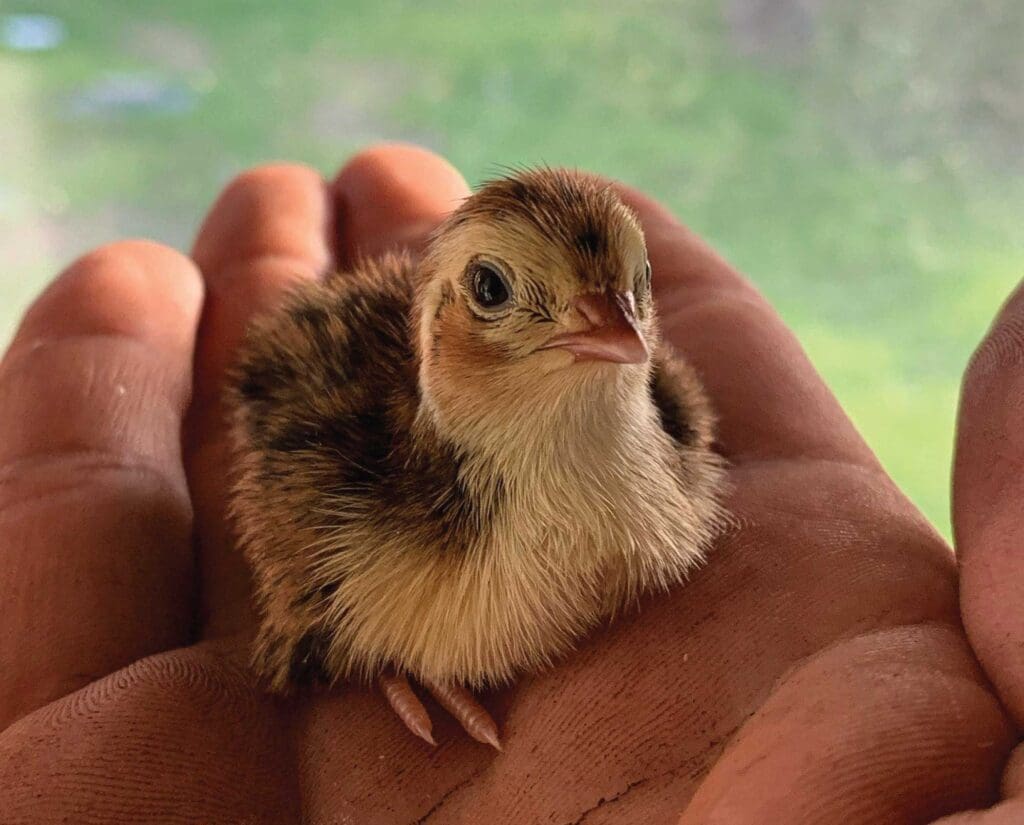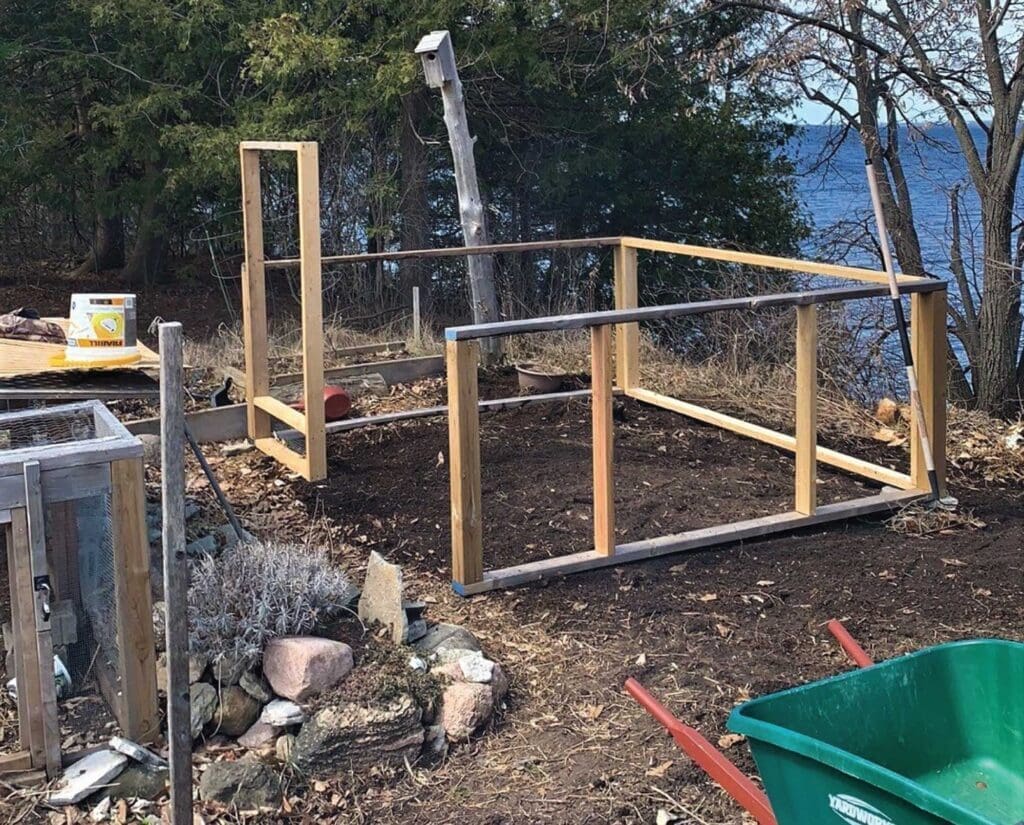Home » Homesteading » Above-Ground versus Ground Housing for Pen-Raised Quail
Above-Ground versus Ground Housing for Pen-Raised Quail

Born and raised in southern Ontario, it wasn't until Mike…
Explore the pros and cons of above-ground and ground housing for pen-raised quail, tailored for either dog training or meat purposes.
I wasn’t exactly sure what to expect, but as best as I could tell, my quail seemed as happy as could be. I’d just moved the young quail that were approaching four weeks of age into their new pen outside – a modest 4’ by 8’ encloser that gave them birds enough space to be happy, plenty of shade to stay cool in the heat of the afternoon, and enough exposure to sunlight to keep them warm and content. I was, however, a little nervous.
Listen to more articles on Apple | Google | Spotify | Audible
I was nervous because I’d read a lot of articles that had warned against raising quail in a pen that was ground level. Predators could have easier access, and, to my horror, there might even be hidden illnesses that lived within the soil that they’d be rooting around in all day. I hoped I hadn’t just sentenced all my young birds to an untimely death.
Those quail ended up making out just fine, but there are also plenty of good reasons to raise your birds up off the ground, some of which we’ll explore here, too.
First and foremost, I chose to raise my birds on the ground for one simple reason; I wanted my quail to live in as much of a natural environment as possible. If they could hide under branches, scratch in the dirt, take dust baths, and everything else that makes a quail happy, they’d live a reasonably stress-free life, translating into a better-tasting bird once I began to cull them. I didn’t expect the impact this would have on things like the number of insects that some might consider pests. For example, during the summer where I live, earwigs are a real problem, as are potato bugs. Quail are experts at turning these problem bugs into protein and will do so all day. I can set bug traps in the gardens, catch a bunch, dump them into the quail pen, and they’ll be gone in seconds.
Indeed, they’ve cut down on the number of pests in the garden because I placed their pen right in the middle of it.
So, before I dive further into why I raise my quail on the ground, let’s explore a few good reasons why keeping quail for both meat and dog training in elevated hutches is a beneficial idea. These practices are applicable to many pen-raised quail species.

Above-Ground Pen-Raised Quail Hutches
For starters, and probably my favorite reason of all, is that when building an elevated pen, it’s possible to add wheels to the legs of the pen so that the quail can be moved indoors during colder months of the year if keeping birds around that long is the goal. This means that you have mobility on your side, and I’ve seen a couple of folks who move their pen from a heated garage in spring to the sunny side of their property when the weather gets warmer. I think this is a genius idea!
Another good reason to keep quail above ground is cleanliness. Quail poop a lot. A floor made of hardware cloth allows fecal matter to drop right through the floor and, presumably, onto a tray or newspaper, which can easily be washed or tossed away. These birds are also messy eaters, so any feed they scatter around will also fall onto the floor. Cleaning this up will reduce the number of rodents an easy meal could attract. You might not believe it, but rats will make a meal out of your quail faster than you’d ever think, so eliminate the potential risk of attracting them.
Designs for these kinds of pens are readily available online – there are dozens of different construction methods. If I had to make any recommendation, it would be to explore as many as possible, pick the best aspects that fit your needs and requirements, and go from there. Keep the well-being of your future quail in mind, too.

Raising Pen-Raised Quail in a Ground Hutch
For me, there are a lot of benefits to raising my birds on the ground. As I mentioned earlier, I enjoy that my quail get to act like quail in a natural environment.
I have two ground enclosures for my birds. The main enclosure is an 8’x8’ pen, big enough to walk into and stand up straight. Most of my quail live their entire lives here, and I’ll keep roughly twenty to thirty birds in it. My second enclosure is a smaller, mostly shaded 4’x8’ enclosure with a small “coop” at the back filled with grass clippings, dirt, and chopped-up straw. This enclosure is used for breeding – a topic I’ll dive into another time. I can also use this pen as a quarantine area for new or sick birds in a pinch. Is having two pens necessary for most folks? Absolutely not. Is it handy? Definitely.
If you decide to keep your birds in a ground pen, using the deep bedding method is a clever idea. In a nutshell, it involves adding bedding material to the pen so that the birds soil it, and instead of cleaning it, you just add more bedding on top of the old stuff. I use this method, and there is virtually no foul odour. The organic material continuously decomposes into compost that I can and do use in my gardens, and the fresh bedding keeps the quail happy and busy foraging for insects. I use a mix of leaves, grass clippings from the lawn, straw, and mulch for bedding. It works wonders, and the quail seem to enjoy it.
I also like to swap out the habitat inside the pen now and again just to keep the birds occupied and curious. This includes different pieces of driftwood, branches from our hedges, and any patches of weeds I dig up from the gardens, which I’ll replant inside the pen. The quail go nuts over that sort of thing and made short work of eating them.
There’s also a third method you can use to keep quail that I wasn’t aware of until recently. If you have enough land to do so, it’s possible to keep your birds in a quail tractor – essentially a pen that is small enough that every two to three days, it’s moved to a new patch of land via manual strength or by lawn tractor/ATV, etc. This allows the birds to have a continuous source of fresh ground to forage on while minimizing the amount of waste buildup. Some large-scale quail keepers use this technique with a very high level of success, and it can be adapted to a smaller scale of quail keeping. It’s also a great way not to mow the lawn anymore.
However you decide to keep your birds, please, do your due diligence ahead of time. Research, and then do more research. Talk to people who keep quail, weigh each method’s pros versus cons, and then go forth. I wish you all the very best with it!
Born and raised in southern Ontario, it wasn't until Mike was in his late twenties that he started hunting and immediately took a strong liking to the pursuit of small game. Snowshoe hare, cottontails, eastern grey squirrels, grouse, and woodcock all have a place in his heart. When not in the woods, Mike is on the water with a fly rod chasing fish with flies that I tied from the animals he's hunted. What a life!




A major problem with raising quail on the ground is intestinal parasites that will cripple and kill quail, partridge and grouse quickly. Sooner or later, they will get them and require weekly worming. Pheasants seem to have a natural resistance to intestinal parasites but should also be wormed every few months for good health and strong feathering. We use Ivermectin to worm all our game birds.